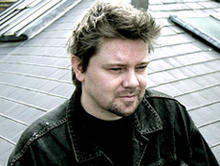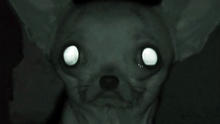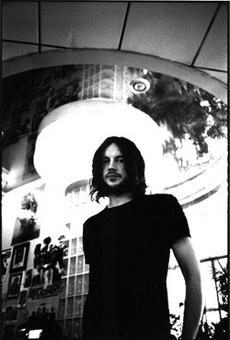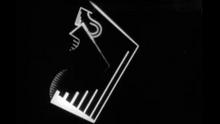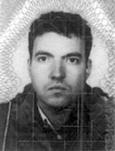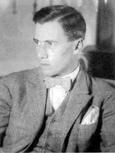Autechre: Gantz Graf
(2002)by Alex Rutterford features an abstract object (or an agglomeration of objects) synchronized to the sounds in the music as it morphs, pulsates, shakes, and finally dissolves.
Gantz Graf is a three-track EP released by Autechre in 2002 on CD and 12". A special DVD release was made available featuring the Gantz Graf video created by Alex Rutterford, as well as the videos for Basscadet (directed by Jess Scott Hunter and edited by D.A. Slade) and Second Bad Vilbel (directed by Chris Cunningham, and an updated version from the original), and a slide show of stills from the Gantz Graf video.
The video for Gantz Graf received widespread attention - perhaps more so than any previous output from Autechre; in interviews, Alex Rutterford stated that it achieved cult status in underground computer-generated imagery art circles.
Alex Rutterford claims the idea for the Gantz Graf video came during one of his LSD trips. Rutterford also stated that there was no generative element to the imagery; every three-dimensional object in the agglomeration was painstakingly and manually synchronised with a specific element or frequency range within the track.
Source: Wikipedia
"I can quite firmly say that the genesis of Gantz Graf came from an interesting experience on LSD once, in about 96, 97. If you've taken a few trips and seen that kind of geometrical stuff, then the film's not too dissimilar from [the one I saw] in my head. And the shit I saw was just fucking incredible. I wish I could have one of those virtual film head sets that you could just plug in, have that trip and just record it, cause the material that I had in my head could last me several lifetimes. It's just bonkers but you forget about it after a while, it becomes a soft memory, just dissipates out and you just can't remember it anymore.
My original was so much more fucked and complicated, and intense, but the end product was a fairly accurate representation of what I first thought.
I went through an incredible learning curve. It took me over a month to conceptualise a technique to work out how I was gonna do the rest of the video. The rest of it is complete and utter boring number crunching, entering sums and stuff.
I literally broke that track down into pages of numbers, like a wacky professor from the Muppet Show, Dr Bunsen. Sheets of paper with loads of numbers on them, (key frames). Although they weren't random, they were related, indicative of certain parts of that scene, certain parts of that track. And I literally had to animate to those numbers, and keep rendering it off, and rechecking it and re-tweaking it to make sure everything worked in time, it's that simple.
You can think of an idea, and that's brilliant, but to get to a point where I technically knew how to do it, you need the right technology, you need the right time, you need some understanding about what you're trying to do as well, and you need understanding of the software.
Technically speaking only a small part of it was automated: the slicing, and digital slicing technique as an automated process, but even that was a technique I developed as well, in order to do just that.
It almost seems obvious when you see it - 'Why hasn’t that been done before?’ ...because they can't be bothered to put the work in. Everyone says 'how long did it take you?' How did you do it, they always want to ask me technical questions. I'd really love to be able to say to them, 'I just wrote a computer algorhythym, and the computer did it all. I wrote a program and it all just intelligently works it out,' but it doesn't exist, it's fools gold thinking that someone can sit there writing a piece of software that can make intelligent decisions about pace and animation, the closest I have seen is perhaps itunes."
Source: Warp Records


